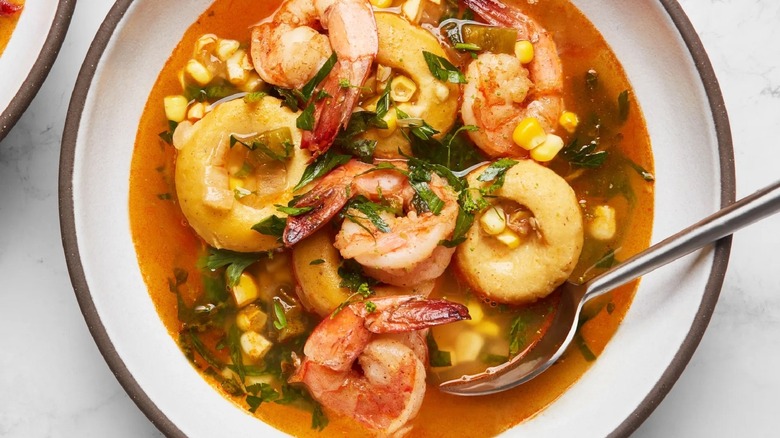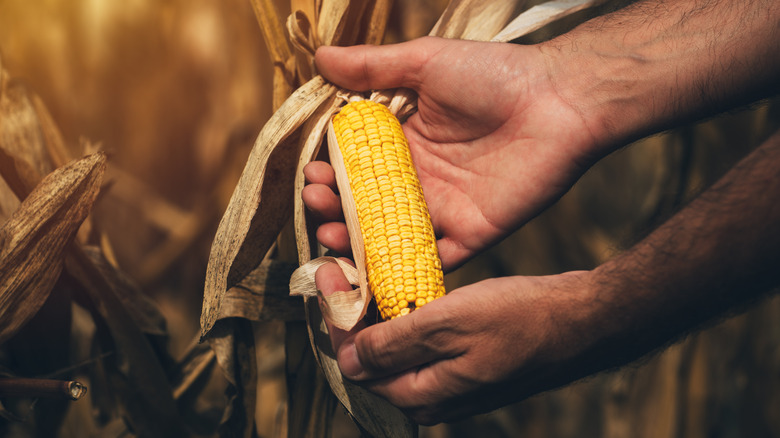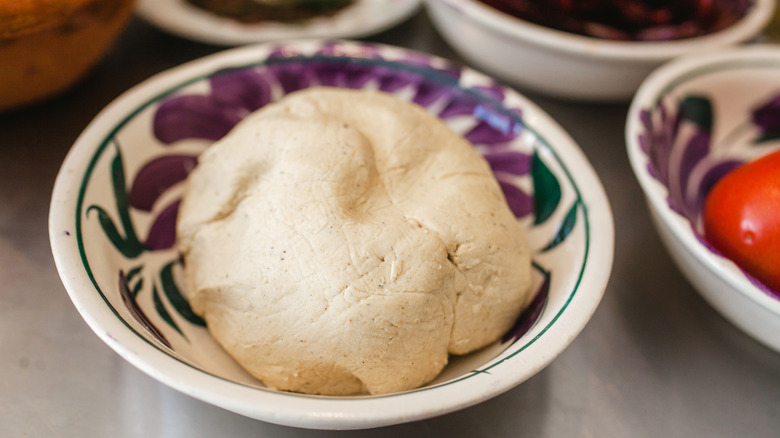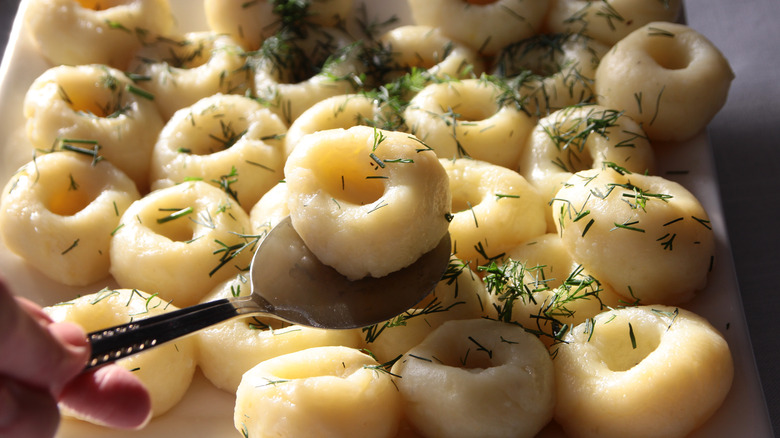Chochoyotes: The Super-Soft Mexican Dumplings You Should Know
Our world, a globe of 193 countries, thousands of religions, and just as many distinct cultures, is stuffed to the brim with regional foods. Some recipes have been passed down orally, safeguarded generationally, or lost to miscommunication or genocide. Humans are inherently tied to the history of food and vice versa, and as we change, our farming practices, our technology, our access to ingredients, and our recipes change too.
But as our world continues to get smaller and smaller with continued product advancements, agricultural revolutions, and deteriorating biodiversity we are seeing more and more of our food diversity disappear when cheaper and heavily produced products inundate our supermarkets (via Minimum Waste). With our food becoming more and more standardized, we must cling even tighter to unique cultural and even familial dishes that might otherwise disappear under the weight of modern culinary supremacy. One such food, which is regional to central and southern Mexico is the chochoyote and its recipes are still used today despite its suspected ancient roots.
The history of Chochoyote
Almost every cultural cuisine in the world has a version of the dumpling. India has the samosa, the Jewish faith offers the Matzo ball, and South African cuisine boats the Dombolo. Chochoyotes are basically the Mexican version of dumplings. Mari Cruz Avalos informs us that these simple, yet delicious balls of corn masa are gluten-free and lend a liquid-based dish a thicker texture. There are different regional variations of the chochoyote which add spices, meat, and even cheese, but there is very little officially recorded history surrounding the chochoyote.
There is no definitive town of origin or known inventor of this Central American dough, but it is believed by Avalos that the food is of pre-Hispanic origin. To be of pre-Hispanic origin means the chochoyote was created before Spaniards or any European colonizers invaded the New World when the older civilizations such as the Aztecs, Mixtecs, and Toltecs thrived (via Sprach Caffe). This would make sense since these societies heavily relied on corn as a staple food crop for thousands of years before colonization.
Chochoyote's Ingredients
Chochoyotes differ from region to region in Mexico, but for the most part, the base of the dumpling remains consistent. The Spruce Eats describes chochoyotes as having a corn flour-based dough that is boiled in liquid whether it be broth or mole, this is because the dumpling is meant to bleed starch into these otherwise watery dishes. Chochoyotes are extremely simple to make using salt, water, and corn masa. Corn masa is inherent to the Mexican diet, reports MasterClass, masa harina is made of ground corn flour which eventually comes together to form the masa dough which is then used for the traditional chochoyote.
Different kinds of corn can affect the dough as well, making it fluffier or denser depending on the amount of starch the corn variety has. The process of turning corn into flour is ancient in Mesoamerica and lends legitimacy to the belief that the chochoyote is pre-colonial in origin. Today, the dumpling has a few other ingredients added for taste such as lard – which would supply the meal with hearty and filling fats- as well as fresh herbs, but part of what makes this dumpling distinct is its presentation. The chochoyote is traditionally rolled into a small sphere and then shaped into a bowl as if one pressed their thumb into the center of the ball (via The Spruce Eats).
How to find and eat Chochoyotes
You would indulge in chochoyotes as you would any other dumpling in a soup. According to Epicurious, chochoyotes are commonly served in a hot broth and cooked until they float to the surface. The best part about the dumplings is that they can be served in any kind of broth with any kind of flavor, so this meal can be made for vegetarians and meat eaters alike. Authentic Mexican restaurants may serve dishes like Tesmole or Oaxacan Black Beans Soup which are both traditionally cooked and served with chochoyotes, but for the most part, these dumplings are easily served and made at home. The recipe for Sopa de Guías de Calabaza is an amazing summer soup filled with seasonal greens and veggies and, of course, chochoyotes (via Seasons of My Heart).
Whether you are looking for a spicy, savory, or even sour soup, if you want it thick and filling, think of adding some chochoyotes into the pot to cook. Accessible to vegan, vegetarian, and gluten-free eaters, these Mexican dumplings are an easy and delicious addition to soups both Central American and non-traditional.



